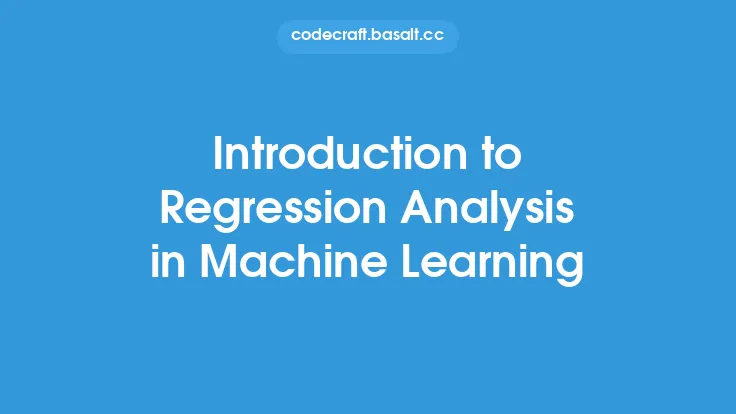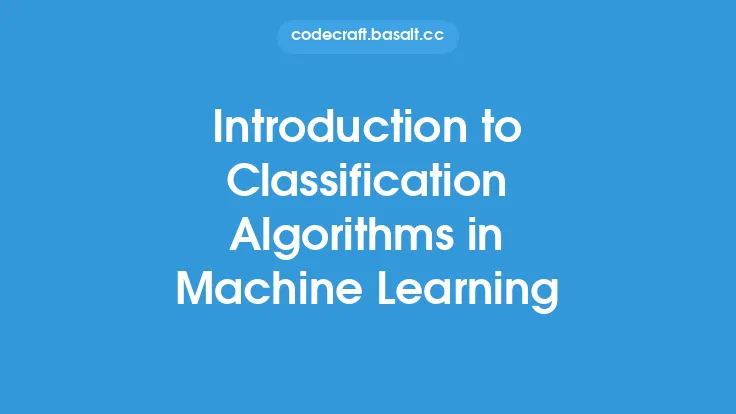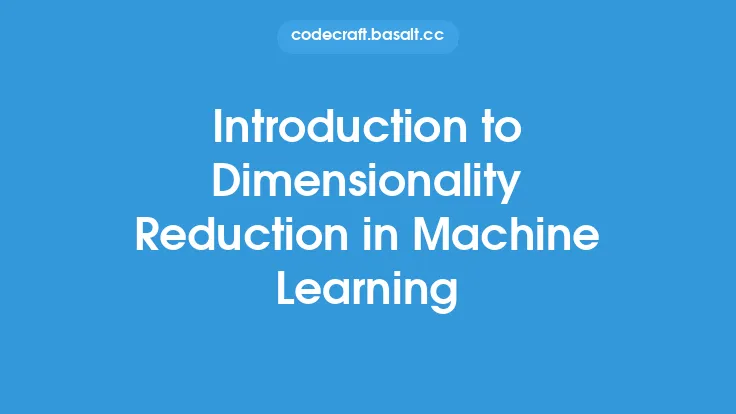Machine learning is a field of study that focuses on the use of algorithms and statistical models to enable machines to perform a specific task without using explicit instructions. The goal of machine learning is to develop models that can make accurate predictions or decisions based on data. One of the critical steps in the machine learning process is model selection, which involves choosing the best model for a given problem. In this article, we will delve into the world of model selection, exploring its importance, techniques, and best practices.
What is Model Selection?
Model selection is the process of selecting the most suitable model for a given machine learning problem. The goal of model selection is to identify the model that best generalizes to unseen data, meaning it can make accurate predictions on new, unseen data. Model selection involves evaluating different models, each with its strengths and weaknesses, and choosing the one that performs best on a given task. This process is crucial because it directly affects the performance of the machine learning system.
Types of Model Selection
There are several types of model selection techniques, including:
- Parametric model selection: This involves selecting the best model from a set of parametric models, such as linear regression or logistic regression.
- Non-parametric model selection: This involves selecting the best model from a set of non-parametric models, such as decision trees or neural networks.
- Semi-parametric model selection: This involves selecting the best model from a set of semi-parametric models, such as generalized additive models.
Each type of model selection has its strengths and weaknesses, and the choice of technique depends on the specific problem and data.
Model Evaluation Metrics
To evaluate the performance of different models, we need to use model evaluation metrics. These metrics provide a way to measure the performance of a model on a given task. Some common model evaluation metrics include:
- Mean squared error (MSE): This measures the average squared difference between predicted and actual values.
- Mean absolute error (MAE): This measures the average absolute difference between predicted and actual values.
- Accuracy: This measures the proportion of correctly classified instances.
- Precision: This measures the proportion of true positives among all positive predictions.
- Recall: This measures the proportion of true positives among all actual positive instances.
- F1-score: This measures the harmonic mean of precision and recall.
The choice of evaluation metric depends on the specific problem and the type of model being used.
Cross-Validation Techniques
Cross-validation is a technique used to evaluate the performance of a model on unseen data. It involves splitting the available data into training and testing sets, training the model on the training set, and evaluating its performance on the testing set. There are several types of cross-validation techniques, including:
- K-fold cross-validation: This involves splitting the data into k folds, training the model on k-1 folds, and evaluating its performance on the remaining fold.
- Leave-one-out cross-validation: This involves training the model on all but one instance, and evaluating its performance on the remaining instance.
- Stratified cross-validation: This involves splitting the data into folds, ensuring that each fold has the same proportion of instances from each class.
Cross-validation provides a way to evaluate the performance of a model on unseen data, which is essential for model selection.
Model Selection Algorithms
There are several model selection algorithms available, including:
- Grid search: This involves searching through a grid of hyperparameters to find the best combination.
- Random search: This involves randomly sampling hyperparameters to find the best combination.
- Bayesian optimization: This involves using Bayesian methods to search for the best combination of hyperparameters.
- Genetic algorithms: This involves using evolutionary principles to search for the best combination of hyperparameters.
Each algorithm has its strengths and weaknesses, and the choice of algorithm depends on the specific problem and data.
Best Practices for Model Selection
To ensure that model selection is done effectively, there are several best practices to follow:
- Use a suitable evaluation metric: Choose an evaluation metric that is relevant to the problem and data.
- Use cross-validation: Use cross-validation to evaluate the performance of the model on unseen data.
- Avoid overfitting: Avoid overfitting by using regularization techniques or early stopping.
- Use a suitable model selection algorithm: Choose a model selection algorithm that is suitable for the problem and data.
- Monitor performance: Monitor the performance of the model on unseen data, and retrain the model as necessary.
By following these best practices, you can ensure that model selection is done effectively, and that the chosen model performs well on unseen data.
Common Challenges in Model Selection
There are several common challenges that arise in model selection, including:
- Overfitting: This occurs when a model is too complex and fits the noise in the training data.
- Underfitting: This occurs when a model is too simple and fails to capture the underlying patterns in the data.
- Class imbalance: This occurs when there is a significant difference in the number of instances from each class.
- Noise in the data: This occurs when there is noise or outliers in the data.
- High dimensionality: This occurs when there are a large number of features in the data.
To overcome these challenges, it is essential to use techniques such as regularization, feature selection, and data preprocessing.
Conclusion
Model selection is a critical step in the machine learning process, and it directly affects the performance of the machine learning system. By understanding the different types of model selection, model evaluation metrics, cross-validation techniques, model selection algorithms, and best practices, you can ensure that model selection is done effectively. Additionally, being aware of the common challenges that arise in model selection can help you to overcome them and choose the best model for your problem. By following these guidelines, you can develop machine learning models that perform well on unseen data and provide accurate predictions or decisions.





